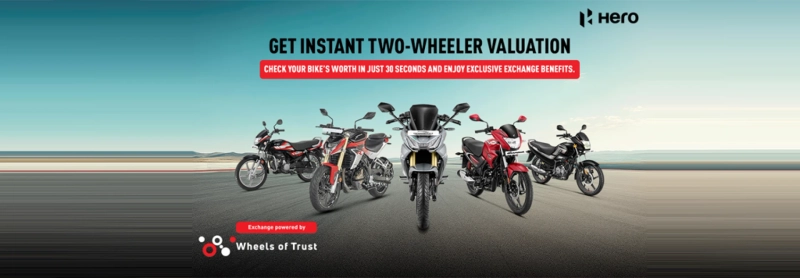India is taking another big step toward safer roads. Starting January 2026, every new two-wheeler sold in the country, be it a scooter or a motorcycle, must come with Anti-lock Braking Systems (ABS), regardless of engine size. Alongside this, dealerships will also have to provide two BIS-certified helmets with each two wheeler purchase: one for the rider and one for the pillion passenger.
This announcement by the Ministry of Road Transport and Highways (MoRTH) marks a major shift in India’s road safety rules, aiming to reduce accidents and save lives.
What Exactly Is Changing?
- ABS for all new two-wheelers: Until now, only bikes above 125cc engine capacity were required to have ABS. Smaller vehicles, such as budget scooters and motorcycles, usually came with Combined Braking Systems (CBS) instead. From January 2026, ABS will be mandatory for all new two-wheelers, no matter the engine size.
- Two helmets with every purchase: Dealers must hand over two BIS-certified bike helmets when a customer buys a new two-wheeler. These helmets will meet Indian safety standards, ensuring both the rider and pillion have proper head protection.
Why Is ABS Important?
ABS, or Anti-lock Braking System, is a technology that prevents the wheels from locking up when you apply sudden brakes. Wheel lockup often causes skidding, which can lead to serious accidents.
Here’s why bike ABS matters:
- It gives the rider better control during emergency braking.
- It reduces stopping distance on slippery or uneven roads.
- It helps prevent the bike from skidding and toppling over.
With India’s traffic conditions, sudden stops, unexpected turns, and crowded streets, ABS can make a life-saving difference. By extending ABS to even 100cc scooters and entry-level bikes, the government is ensuring safety is not just a “premium feature” but a basic requirement for everyone.
Why Two Helmets?
According to road safety data, nearly 40% of two-wheeler deaths in India involve head injuries. While riders are somewhat more likely to wear motorcycle helmets, pillion riders often skip them.
By making two helmets mandatory at the time of purchase, the government is tackling this issue directly. This means:
- Both rider and pillion will have equal protection.
- BIS certification ensures helmets are tested for impact resistance and durability.
- It encourages families to prioritize safety over convenience.
Simply put, the new rule closes the safety gap for pillion passengers.
How Does This Benefit Riders?
At first glance, some riders may worry about extra costs, as bike ABS system technology and certified helmets are not free. However, the long-term benefits far outweigh the price.
- Better safety: Riders of smaller scooters and bikes, who make up a huge chunk of daily commuters, will now get the same protection as those on bigger motorcycles.
- Peace of mind: Knowing both rider and pillion are equipped with proper helmets reduces risk.
- Lower medical expenses: Preventing accidents means avoiding hefty hospital bills.
- Insurance benefits: ABS-equipped vehicles may lead to lower insurance premiums in the future.
Essentially, it’s an investment in life and health.
How Will the Market Respond?
The new rules will likely change how two-wheeler makers design and price their products.
- Scooter segment: Budget scooters, currently popular for affordability, will become slightly more expensive due to ABS. But manufacturers may find ways to balance costs without compromising safety.
- Helmet industry boost: With dealerships required to provide two BIS-certified helmets, helmet makers will see a surge in demand. This could also lead to more innovation in lightweight, stylish, and comfortable helmets.
- Dealerships: They will now need to keep a stock of helmets and ensure they hand them over with every sale, adding accountability.
Road Safety in India – A Needed Push
India records one of the highest numbers of road accidents in the world. Two-wheelers are particularly vulnerable, accounting for a large share of fatalities.
Previous steps like:
- ABS for bikes above 125cc,
- mandatory helmet laws in many states,
- and CBS for smaller bikes,
have improved things, but gaps still remain. With these new measures from 2026, the government hopes to bring down accident numbers sharply.
The bigger message is clear: safety cannot be optional.
What Should Riders Do Now?
Even though the rule applies from January 2026, riders don’t need to wait until then. Here’s what you can do right away:
- If you’re planning to buy a new bike or scooter, consider opting for ABS-equipped models already available.
- Always invest in good quality, BIS-certified helmets for both rider and pillion.
- Remember, these rules are not just about compliance but about protecting lives.
Making Riding More Secure
The upcoming rule of mandatory ABS and two helmets with every new two-wheeler purchase from January 2026 is a much-needed leap for India’s road safety journey. By extending advanced braking technology to all vehicles and ensuring helmets for both rider and pillion, the government is addressing two of the biggest causes of road fatalities: head injuries and the often asked do bikes have ABS question.
The prices of new two-wheelers are also expected to decrease due to the new GST positioning, potentially saving lakhs of lives every year. In the long run, this move is not just about following rules but about cultivating a culture where safety is the top priority.



